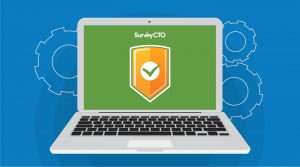It's time to move beyond paper and spreadsheets–here’s how
You already know that digital tools for data collection exist. Many organizations—even in resource-constrained environments—are using them successfully. But if your team is still relying on paper forms or toggling between spreadsheets and digital-based processes, you’re not alone.
In Dec 2024, we asked over 800 users which type of data collection they were using: Fully digital, fully pen-and-paper, or a mix. In their responses, 34% said they use a mix of paper and digital, while 5% remain fully paper-based (and the rest are fully digital).
That 34% represents the middle ground between manual and digital, which is where many organizations get stuck. And we often hear the same hesitations:
- “We don’t have the resources to overhaul our entire process.”
- “Training the team sounds complicated.”
- “What if the digital tools aren’t flexible enough for our needs?”
- “Will we lose control or visibility over our data?”
But here’s the truth: holding off on full digitization can cost more over time than making the leap to digital data collection. Paper-based and manual workflows–even when used in connection with some digital processes or tools–introduce delays, errors, and missed opportunities, especially when your team needs to move quickly, coordinate across regions, or deliver data to key stakeholders.
Why switching to electronic data capture is more urgent than ever
The world isn’t just becoming more digital at the pace it has been in the past–it’s accelerating.
With the rise of artificial intelligence (AI) alongside the existence of increasingly sophisticated cloud-based tools and interoperable data systems, organizations must collect, analyze, and share data faster and more accurately than ever before. And as digital transformation becomes the new standard, holding onto manual data collection processes could leave your team—and your mission—left further and further behind.
Electronic data capture isn’t just a “nice to have.” It’s becoming foundational to modern, efficient data workflows. Here’s why:
- AI and automation require structured digital data
Emerging technologies like AI and machine learning can dramatically improve the speed and insight of analysis, but only when working from clean, well-organized digital datasets. If you’re still using paper or manual entry for part of your workflow, you’re creating a bottleneck.
- Global collaboration demands interoperability
Investors, funders, NGOs, government agencies, and others increasingly expect data to be digitally accessible and compatible across platforms. Paper-based systems simply can’t keep up with the pace or scale of today’s cross-organizational collaboration.
- Manual systems delay impact and increase risk
Time-consuming data entry, transcription errors, lost or damaged data, and storage challenges not only slow down decision-making but also introduce risk and reduce accountability. Digital data collection tools help standardize, secure, and streamline your entire workflow.

Digital data collection platforms that work offline on devices like smartphones enable computer-assisted personal interviewing (CAPI) for data collection.
Digital transformation is possible—even in low-resource settings
While high-income countries are advancing quickly, digitization isn’t just for those with abundant resources. According to the World Bank, more than 90% of people in high-income countries are online, compared to just 26% in low-income countries—and that divide is widening.
But that doesn’t mean digitization is out of reach in low-resource settings. In fact, many of the organizations making the most effective use of electronic data capture are doing so precisely because of the challenges in these regions.
In the next section, we’ll show you how going digital makes a tangible difference across key sectors like agriculture, global health, and field operations.
From farming to field operations: Why electronic data capture makes sense
No matter your sector, manual and paper-based data collection is slowing down critical decision-making and creating unnecessary administrative overhead. The result? Lost opportunities, higher costs, and limited visibility into what’s working.
Electronic data capture helps eliminate these issues—whether you’re measuring field plots, tracking patient data, or logging inspection reports. And importantly, tools like SurveyCTO with offline capabilities are specifically designed to work even in low-connectivity environments, meaning you can still capture data digitally in resource-constrained settings with unreliable Internet.
Here’s how going digital makes a measurable difference across key industries:
Global health
Relying on paper records and manual data entry in low-resourced healthcare settings slows patient care and introduces potentially serious errors. It’s difficult to aggregate or analyze paper-based patient data at scale, limiting its usefulness in public health policy.
How electronic data capture helps: Electronic data capture tools powers Electronic Health Records (EHRs) and Electronic Medical Records (EMRs), enabling healthcare workers to quickly and accurately collect patient data, even in low-connectivity areas. These systems improve continuity and quality of care, streamline reporting, and support data security and compliance.
For example, Nyaka, a humanitarian aid organization in Uganda, replaced its paper-based medical records with a digital system built using SurveyCTO and Google Sheets, enabling health workers to instantly access patient data and reducing multi-week reporting processes to under 10 minutes.
Similarly, J-PAL, a global research center, uses SurveyCTO across hundreds of impact evaluations, relying on its secure offline capabilities to collect high-quality data and maintain rigorous standards—even in remote or resource-limited environments.
Agriculture
Many farmers still rely on pen and paper to track crop yields, plan irrigation schedules, and measure field plots. In low- to middle-income countries, where farmland is often fragmented, plot measurements are still done manually—leaving too much room for error.
How electronic data capture helps: Mobile data collection tools that enable GPS and GIS integration now make it easy to accurately map field plots, monitor yields, and capture real-time environmental data. This leads to better decisions on crop rotation, fertilization, and pest control—and, ultimately, higher productivity and sustainability.
From farming to fieldwork: Why electronic data capture makes sense
See how GIS and GPS-enabling tools like SurveyCTO are transforming plot measurement and improving data quality in the field in this webinar ⬇️⬇️⬇️

Field operations and services
Safety inspections, equipment checks, and time tracking are still frequently managed on paper. These forms are hard to track, easy to lose, and time-consuming to process.
How electronic data capture helps: With digital forms accessible via mobile apps—even offline—field teams can complete inspections and track tasks in real time. Supervisors gain instant visibility into project progress and compliance, helping operations run more smoothly and safely.
For example, a field services team using mobile digital data tools for equipment inspections can reduce delays and improve outcomes by automating routine checklists and syncing data instantly with headquarters.
Humanitarian aid
Humanitarian organizations often collect data using paper forms during crisis responses, leading to delays, data loss, and inaccuracies. Coordinating aid efforts becomes challenging when data is not promptly shared among agencies.
How electronic data capture helps: Digital tools enable real-time data collection and sharing, improving coordination among agencies and ensuring timely assistance to affected populations. Standardizing data collection methods enhances the accuracy and comparability of information, facilitating evidence-based decision-making.
Political campaigns and elections
Campaign volunteers and staff frequently use paper forms to register voters, conduct surveys, and gather constituent feedback. This manual process can lead to data entry errors, mismanagement, and delays in strategizing.
How electronic data capture helps: Digital data collection streamlines voter registration and survey processes, ensuring accurate and up-to-date information. It allows for immediate data analysis, enabling campaigns to adjust strategies promptly and effectively.
Environmental monitoring and carbon offsets
Field researchers often use paper forms to record environmental data such as wildlife sightings, water quality measurements, and pollution levels. This method is prone to transcription errors and delays in data availability for analysis.
How electronic data capture helps: Digital data collection tools, such as mobile apps with GPS capabilities, enable accurate and timely recording of environmental data. This facilitates better tracking of environmental changes and more responsive conservation efforts.
Manufacturing
Many manufacturing plants still rely on paper-based systems for tracking production metrics, equipment maintenance logs, and quality control checks. This approach can result in data silos, delayed reporting, and increased human error.
How electronic data capture helps: Implementing digital data collection systems allows for real-time monitoring of production processes, predictive maintenance scheduling, and immediate identification of quality issues, leading to increased efficiency and reduced downtime.
It all starts with collecting data

If you’re looking to modernize your workflows, there’s no better place to begin than with how you collect data. Electronic data capture is the foundation of any digital transformation strategy, so it’s important to get this part right before looking at digital tools for data analysis or visualization.
Think of it this way: If you’re still using paper forms or spreadsheets, you’re collecting valuable information in a risky way. Electronic data capture tools will decrease those risks–if you choose a quality tool.
Not knowing which digital tool to use for data collection can be a real barrier to companies or organizations seeking to go digital. To help you in that transition, we’ve put together some helpful guidelines in the next section.
What to look for in a digital data collection tool
Not all electronic data capture software is created equal. Whether you’re in agriculture, global health, field operations, or another sector, look for tools that are:
- Customizable: So you can tailor forms and workflows to fit your organization’s specific needs.
- Interoperable and extensible: Able to integrate with other platforms and tools in your tech stack as well as being customizable to fit your exact specifications.
- User-friendly: Especially important if you’re working with low-tech or field-based teams.
- Offline-capable: Critical for data collection in rural areas, construction sites, disaster zones, or anywhere with unreliable internet access.
- Secure and compliant: To ensure sensitive data is protected and meets local and international standards.
These features are especially important for field operations, where real-time data collection directly impacts safety, compliance, and progress tracking.
Now, build the rest of your digital tech stack
Once you’ve transitioned your data collection processes to a digital tool, you’ve already made the hardest leap. From there, you can build a powerful tech stack around it:
- Cloud-based storage: Replace locally saved Excel files with cloud databases or tools like Google Sheets, where data is more accessible and secure.
- Advanced analysis and reporting: Integrate with tools like DevResults, PowerBI, Stata, or Salesforce to generate insights, automate dashboards, and drive smarter decision-making.
The key takeaway here is that digital transformation starts with data collection. Get that part right, and the rest becomes much easier.
Real results from organizations that went digital
Even if the benefits of electronic data capture sound great in theory, it’s fair to ask: Will this actually work for my team, in the field, with our unique challenges?
To help answer that, we asked users from our SurveyCTO community who’ve made the switch from paper-based to digital workflows to share their experiences. The results were clear: transitioning to digital tools not only helped them collect better data, it made their overall workflows easier, faster, and more impactful.
Here are some of the benefits that stood out:
The ease of data analysis. There is no need for data entry (transferring data from a paper-based questionnaire into Excel), which is prone to errors. It is also easier to manage skips.
SurveyCTO user
A digital platform has changed the format of the surveys we develop. They can be longer without necessarily being more time-consuming.
SurveyCTO user
Digital makes life easier and surveys faster.
SurveyCTO user
Things are performed quickly and with precision. The number of enumerators is reduced with digital.
SurveyCTO user
The speed at which we complete work.
SurveyCTO user
Ready to go digital? You don’t have to do it alone
Making the shift to electronic data capture might feel like a big step, but you don’t have to figure it out on your own. At SurveyCTO, we offer a full range of professional services and support to help you build digital data systems that work for your team, your workflows, and your goals.
Even better: SurveyCTO is a low-code/no-code platform designed to be used by field teams, program staff, business users, researchers, and more, not just developers.
That means anyone on your team can build and manage forms without needing to write code. For more complex needs, our platform plays nicely with the tools your technical teams already use, so they can focus on mission-critical work instead of rebuilding systems from scratch.
Ultimately, it’s not just about going digital—it’s about building smarter, more scalable workflows that help your team move faster, work more efficiently, and unlock better outcomes from the data you collect.




